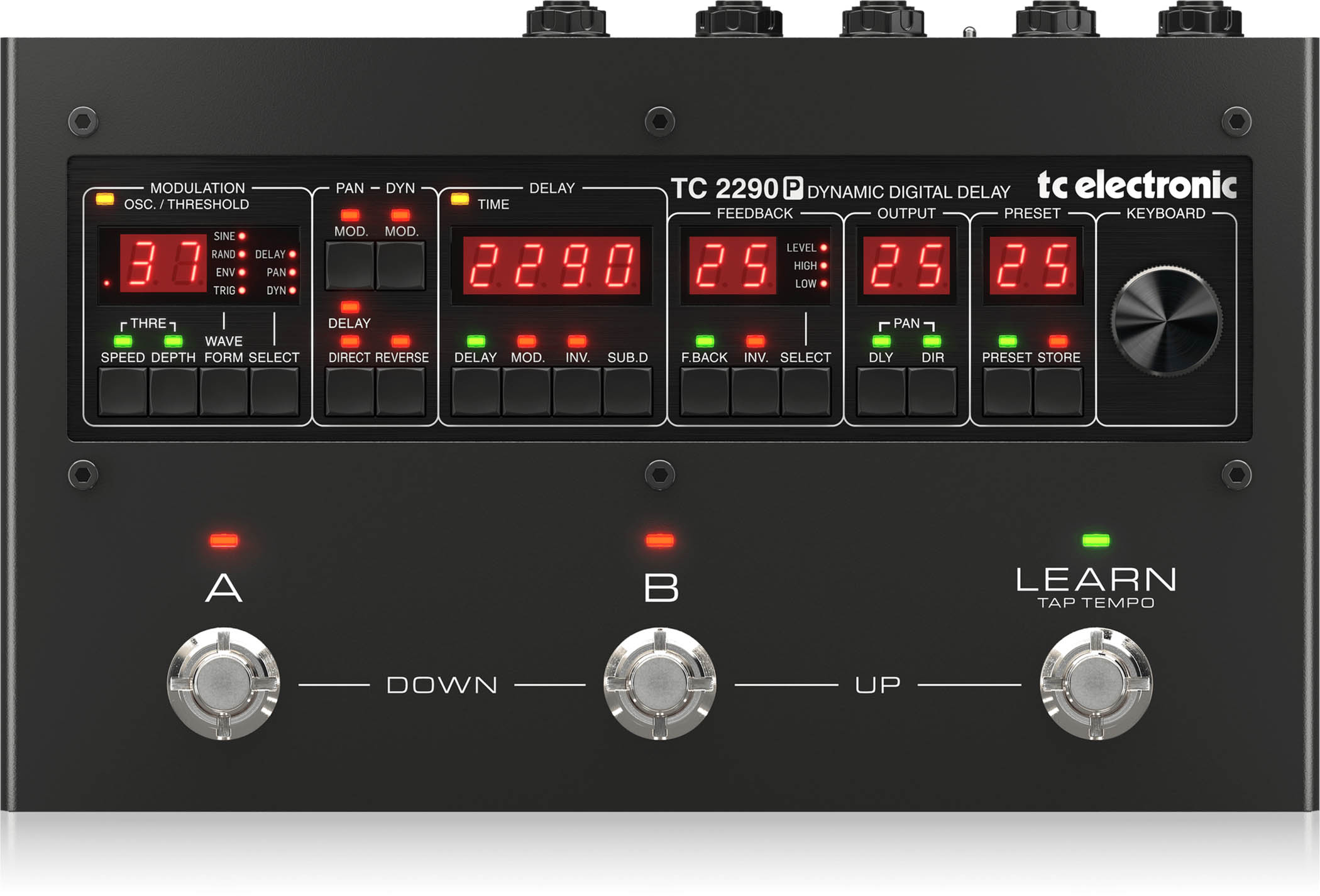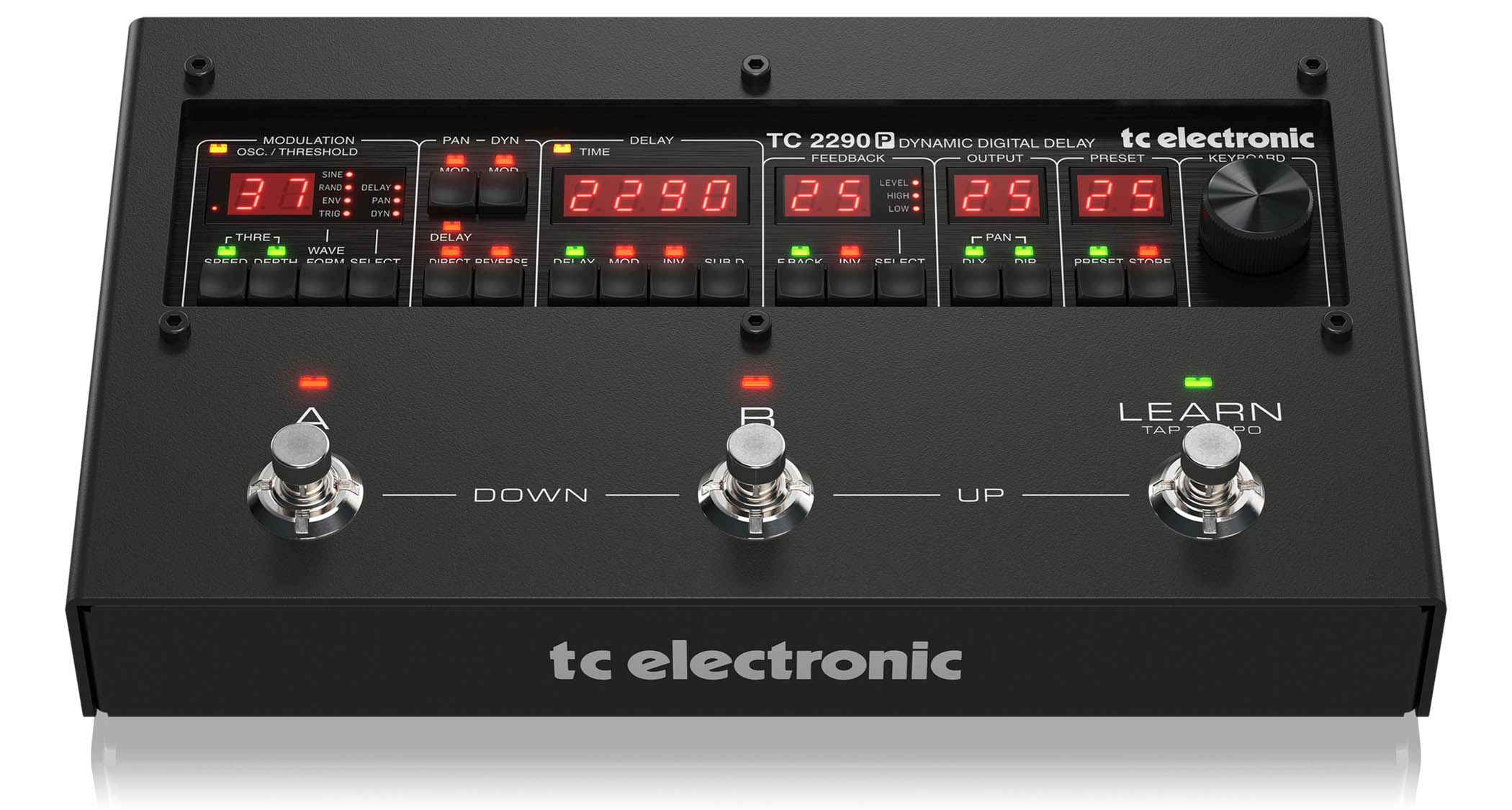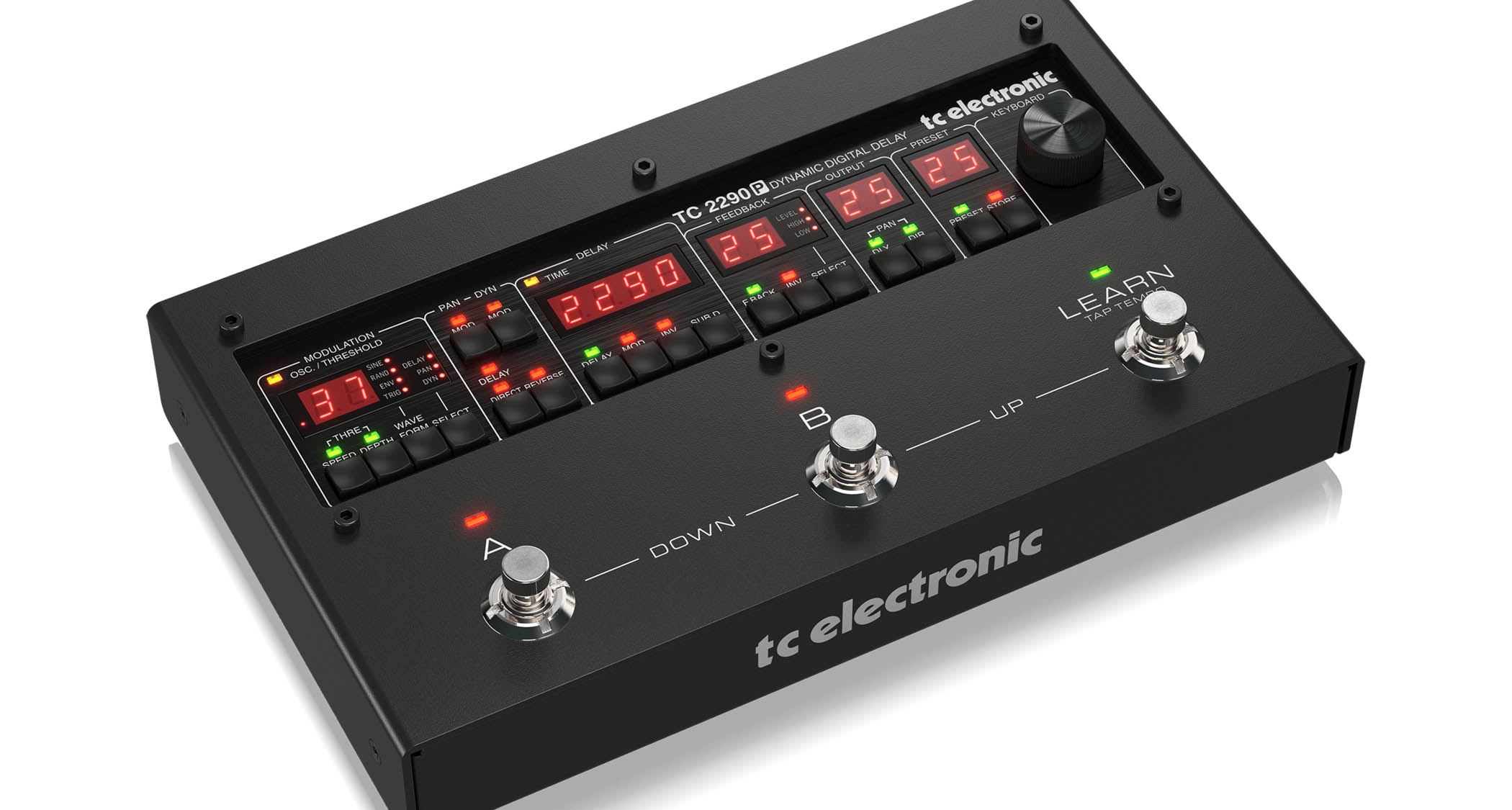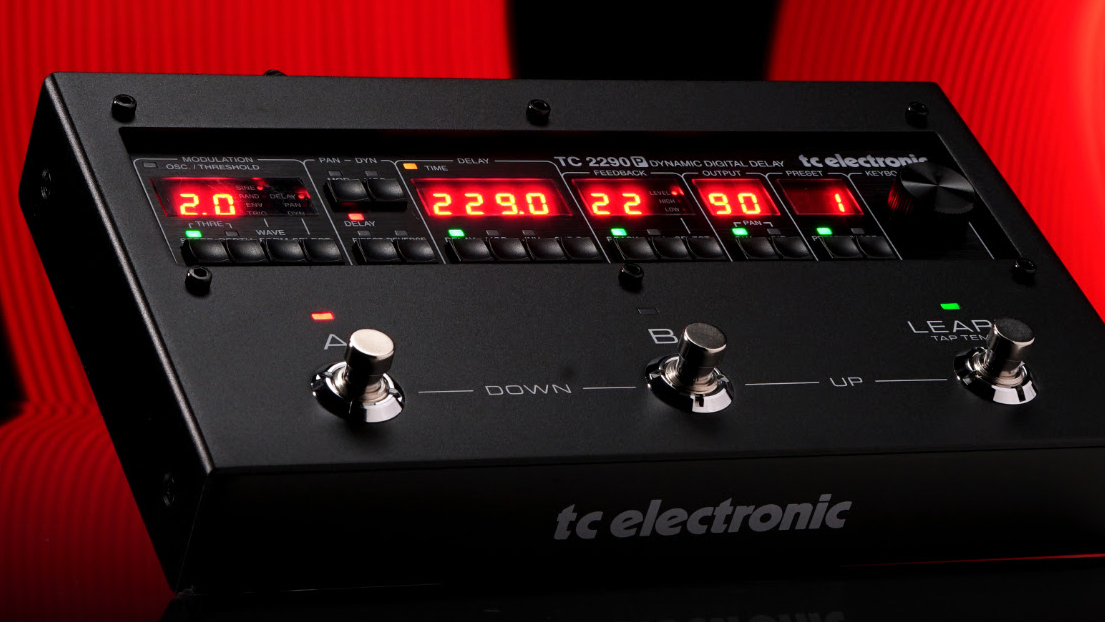Guitar World Verdict
TC Electronic’s new 2290P pedal delivers the genuine sound quality and dynamic expressiveness of the original 2290 rack unit in a pedalboard-friendly format that is much easier to use live and significantly more affordable.
Pros
- +
Delivers the same pristine, lush delay and modulation effects as the coveted original rack unit.
- +
Expanded delay time and other parameters.
- +
Addition of tap tempo/learn functions.
- +
Settings for delay subdivisions.
- +
Affordable price.
Cons
- -
Single delay line only.
You can trust Guitar World
The mid-’80s was a golden age for digital delay, thanks to the proliferation of pro- and studio-quality rack effects units from Eventide, Korg, Lexicon, Roland and Yamaha. For many guitarists, the best rack delay unit to emerge during this era was (and is) the TC Electronic 2290.
It had numerous advantages like its advanced modulation section and MIDI loop switching, but what truly made the 2290 so desirable even today nearly 40 years after its introduction in 1985 was its incredibly luscious, detailed and musical sound quality as well as its expressive, dynamic performance capabilities.
Original 2290 rack units have continuously fetched high prices on the used market, but in addition to its bulky size a major drawback is that it’s nearly impossible to service should any problems arise.
TC Electronic’s new TC 2290P Dynamic Digital Delay pedal provides a much more desirable alternative by offering the genuine classic sounds of the original 2290 in all their glory along with numerous modern additions and enhancements, all in a stage-worthy compact pedal format.
The 2290P’s control panel looks similar but not identical to the faceplate of a 2290 rack unit shrunk down to 8- x 2-inch dimensions, featuring Modulation, Pan/Dynamics, Delay, Feedback, Output and Preset sections with two- and four-digit numeric red LEDs and pushbuttons for selecting parameters.
A rotary Keyboard encoder knob replaces the numeric keypad used for entering parameter values. Users can also manage presets, set up MIDI control and change general settings using the dedicated 2290P desktop app for Mac and Windows computers.

The rear panel is also more streamlined, providing stereo ¼-inch input and output jacks that can be switched to mono input/output plus an effects loop, an expression pedal jack, mini USB-C jack, 9-volt 250mA center negative power input and full-size MIDI In and Out/Thru jacks.
The pedal also includes three footswitches for scrolling up and down through presets, as well as engaging Learn and tap tempo functions that weren’t available on the original unit.
The control and rear panel may be slightly downsized compared to the original, but the range of numerous parameters has been increased. For example, the maximum delay time is now 9.9999 seconds compared to about 4 seconds for original units with the proper system software upgrades.

Delay subdivisions including dotted notes and triplets have also been added. The pedal stores 128 presets internally, and TC has loaded the unit with a full library of programs from the original unit plus new presets from artists and producers.
Offering only a single delay line, the 2290P may seem primitive compared to the multi-delay units common today, but its pristine sound quality still makes it quite attractive to delay aficionados.
Thanks to its sophisticated modulation section, the pedal can produce lush chorus and deep phase shift/flanging effects as well as tremolo/vibrato, panning, dynamic ducking and compression effects.

The texture of long sustaining delay tails is reverb-like and three-dimensional, and the delayed signals can be processed separately from the dry signal using effects patched into the pedal’s effects loop.
The luxurious sheen of the 2290P’s modulated delay effects reveals why the original 2290 has remained a permanent fixture in pro guitarists’ rigs and recording studio racks for four decades.

The sound quality and dynamic expressiveness results in an inherent musical je ne sais quoi about the 2290 that stands apart from most of today’s sophisticated delay units, which certainly sound very good but not quite as organic.
If owning a 2290 has been on your gear bucket list, rest assured that the 2290P ticks all the right boxes for a price that won’t wipe out your retirement fund.
Specs
- PRICE: $349
- TYPE: Digital delay pedal
- CONTROLS: Keyboard rotary encoder
- SWITCHES: (Modulation) Speed, Depth, Waveform, Select (Pan) Mod, Direct (Dyn) Mod, Reverse (Delay) Delay, Mod, Inv, Sub.D (Feedback) F.Back, Inv, Select (Output) Dly, Dir (Preset) Preset, Store (Rear Panel) Stereo In Out/Feedback Loop
- FOOTSWITCHES: A, B, Learn/Tap Tempo
- JACKS: Input Mono, Input Stereo/Return, Output Mono, Output Stereo/Send, Expression, USB-C, 9-Volt DC, MIDI In, MIDI Out/Thru
- CONTACT: TC Electronic
Chris is the co-author of Eruption - Conversations with Eddie Van Halen. He is a 40-year music industry veteran who started at Boardwalk Entertainment (Joan Jett, Night Ranger) and Roland US before becoming a guitar journalist in 1991. He has interviewed more than 600 artists, written more than 1,400 product reviews and contributed to Jeff Beck’s Beck 01: Hot Rods and Rock & Roll and Eric Clapton’s Six String Stories.
“I liked that they were the underdogs. It was not the mainstream guitar. It was something that was hard to find”: Vox guitars deserve a second look – just ask L.A. Witch’s Sade Sanchez, who’s teaming hers with ugly pedals for nouveau garage rock thrills
“I suppose I felt that I deserved it for the amount of seriousness that I’d put into it. My head was huge!” “Clapton is God” graffiti made him a guitar legend when he was barely 20 – he says he was far from uncomfortable with the adulation at the time
“I was in a frenzy about it being trapped and burnt up. I knew I'd never be able to replace it”: After being pulled from the wreckage of a car crash, John Sykes ran back to his burning vehicle to save his beloved '76 Les Paul












